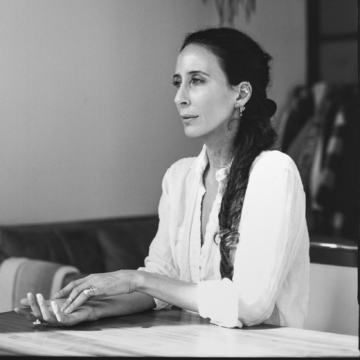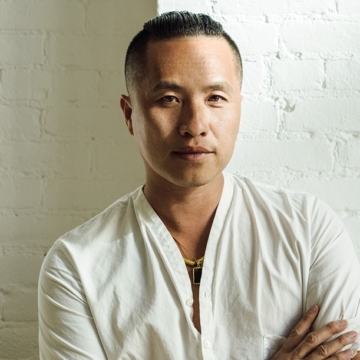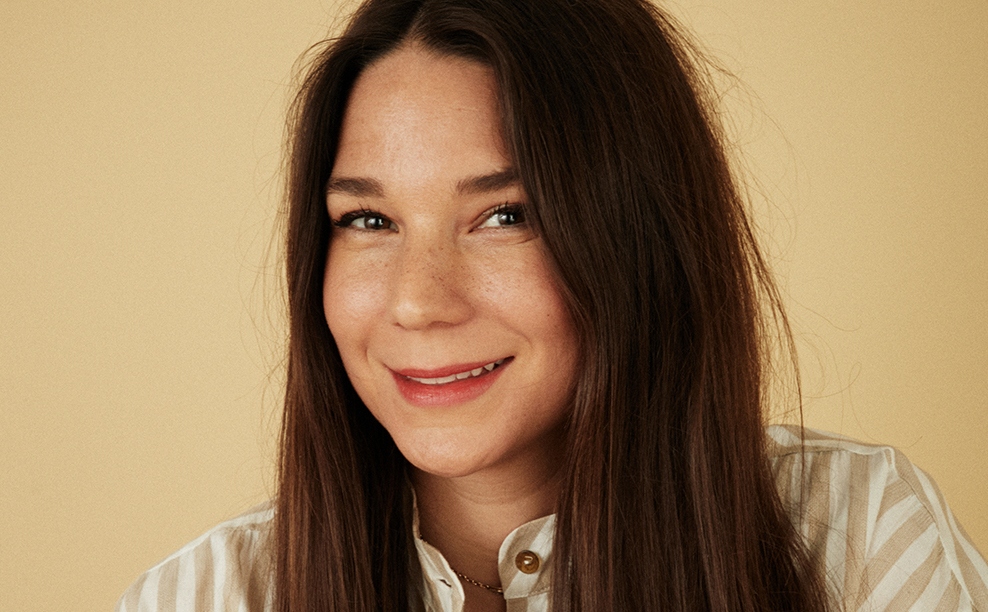
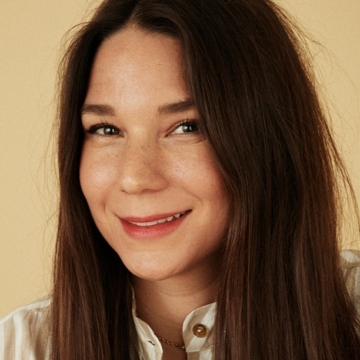
Nanushka’s Sandra Sandor Talks Sustainable Fashion Post-COVID
It feels all too apropos to reach Nanushka founder and designer, Sandra Sandor, on a boat floating in the Adriatic Sea. From what I read of Sandor–who launched her line in 2006 after graduating from London College of Fashion and endearingly named it after her childhood nickname–a sense of wanderlust and East-meets-West references are embedded within the DNA of the brand and its relaxed luxe designs.
I thought perhaps that maintaining a global perspective, a bedrock of her buzzy sustainable line, would be difficult to maintain amidst a global pandemic. After all, international travel was at a standstill and many borders were all but closed until just a few months ago.
But Sandor is still managing to imbue her line, which counts fashion It girls and celebs like Rihanna and Hailey Beiber as fans, with a sense of escapism–even if we’re all socially distancing. As she tells me, she had spent months before sequestering herself in the Hungarian countryside not far from her home in Budapest, where she completed her upcoming Spring 2021 collection virtually. “We developed some really interesting new tools for remote working, which we’re still using now within the design team. We designed the whole collection remotely, which was also very interesting. We’re quite happy with the results.” Between doing fittings via video conferencing calls, developing out sketch reviews through online presentations, and taking scores of meetings virtually, Sandor and her team (which also includes her husband Peter Baldastzi, who joined the company as CEO in 2016) learned to pivot and managed to complete a collection in isolation, like so many in fashion have had to do.
Lockdown has led to her recommitting herself to Nanushka’s values of sustainability, authenticity, and comfortability in an even deeper and fuller way. “What’s really interesting is the way the pandemic has affected us and our values. I think for me, it reassured me that our current values are on a good track. Of course, it’s not a question of ‘good’ or ‘bad’ values because they are your values, but just looking at it from an outside perspective, it actually reassured me that I really want to continue with those,” she says.
It’s interesting to consider that the sustainable fashion leader and innovator would ever question her instincts, especially given the runaway success of her signature vegan leather bomber jackets, cozy knits, and slippery satin separates that comprise the brand’s beguiling earthy minimalist aesthetic. But Nanushka’s transition towards more ethical praxis began just five years ago, at a time when, as she tells me, not many production resources, textile alternatives, or fashion industry attention were available to Sandor. Still she persisted: “Working in such a polluting industry really made me realize that I would like to balance out the situation or give something back.” Nanushka partnered with the Ellen McArthur Foundation in 2018 to develop circular economy models for fashion, while the brand’s in-house Sustainability Team allows her to constantly be developing new ways to innovate. Her recent sale with TRR being one of them.
Here, the designer speaks to how she came to sustainability, and how her collaboration with TRR continues in that effort.
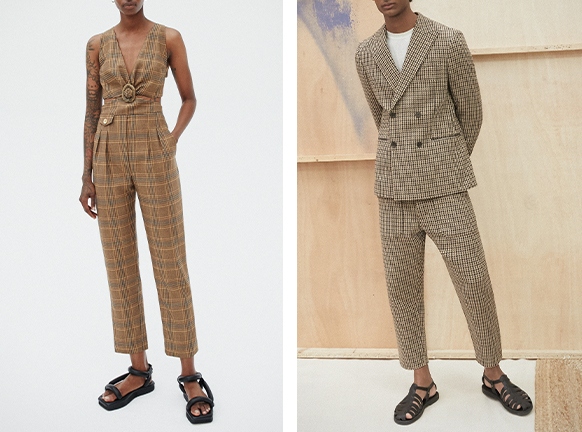
How She Came To Sustainability In Her Work
“Nanushka’s core founding value is to cherish the planet and the living creatures included. That’s something I really believe in, but actually to execute sustainable moves in the company wasn’t from point 0 because I started Nanushka 15 years ago. I didn’t realize back then how this links everything together. I also didn’t even realize how bad the situation was and how bad the effect of the fashion industry was. It was gradual, but then there was a tipping point when you build-up all this information, and then you feel like, ‘Okay, this is the moment you have to [act].’”
She Started With The Personal First And Then Moved To Business
“Sustainability started on a personal level because working in such a polluting industry really made me realize that I would like to balance out the situation or give something back. I love the concept of being part of an ecosystem and trying to maintain its balance. I think a lot of companies are putting a lot of stress into how we can eliminate your carbon footprint. I think that’s such an interesting concept. I feel so enthusiastic about that and also looking ahead in the future.”
Sustainability Is In The Fiber Of Nanushka’s Being Now
“The first step was in the raw material and material mix to really try and change all our cottons to organic cottons, to change our polyesters to recycled polyesters, all cellulose-based fibers to FSC-Certified materials and so on. Basically, what we’re trying to do is season by season to raise the percentage of our material mix. Also, the way we’re trying is the use of deadstock fabrics. We have a minimum of requirements of how much of a percentage we have to use of deadstock. That’s a design challenge, but it’s a very interesting challenge. I really love using up waste in interesting ways of crochet or patchwork. It makes it so one of a kind. Now, we have a sustainable team committed to analyzing where we’re at, not only on an environmental but also on a social-responsibility level and also on how we’re operating within the company, how we can be more and more sustainable. So in every single little part of our actions and operations, they’re investigating and analyzing. We have sustainability meetings where we’re deciding on how we’re moving forward with every little bit of thing we can change. Obviously, it’s a long way.”
Building A Green Future From The Ground Up
“We’re opening a store now in London…there are very strict sustainability initiatives there we’re trying to implement–on every level as much as possible. The other stores have some sustainability features as well, but the London one is going to be the most advanced one. All the stores are then to use locally sourced materials to cut back on carbon footprint, all the furniture is vintage hand picked by me and often repaired in line of our commitment to circularity.”
Fashion Week Goes Virtual This Year For The Brand
“Fashion Week is still an important element and of course there has to be some changes made, however the personal touch is still very important and once it’s possible again we will want to present a collection in person. For this year we are thinking on more digital, virtual approaches. Sustainability was always part of our previous presentations as well, as we worked with Bureau Betak who developed strict sustainability measures, plastic free backstage, recyclable elements, using vintage and existing elements.”
How Much Growth There Has Been In Conscious Fashion
“If I look back three years ago, as a designer, I would have had to make compromises on aesthetic values in order to choose sustainable materials, but I think now, this is changing super fast. Fabric suppliers have great sustainable alternatives and offers. That’s why I think we can increase our sustainable offering so rapidly and dynamically.”
Nanushka Sees The Value In Craftsmanship
“Something that is made with hands, it’s an art. It’s special. It’s unique, and it taps into emotional values. It also makes the wearer feel special too if you’re aware of all this information. We have worked on a few projects along the line where we have put a very strong focus on craftsmanship. Our most recent one involved these clay buttons made by women in rural Hungary in collaboration with Noha Studio. The project was also about empowering these women and helping them earn more to support their family, health, and wellbeing.
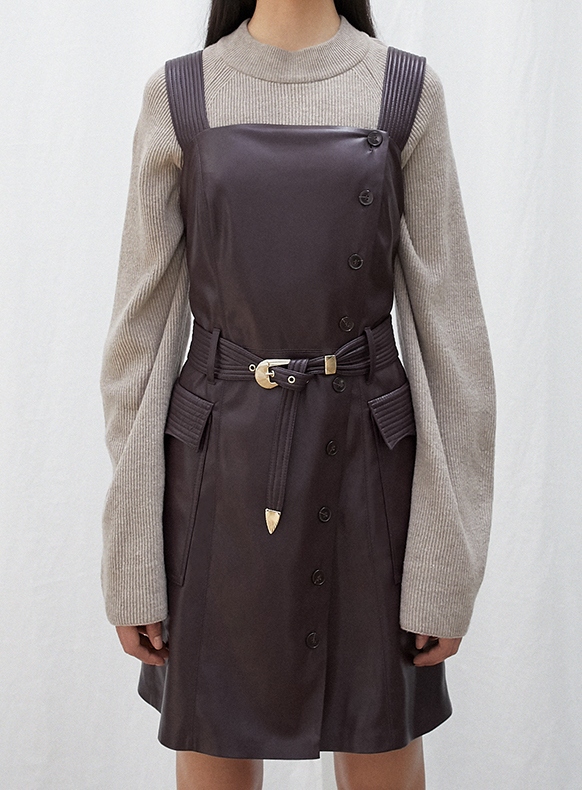
How She Came To Develop Her Iconic Vegan Leather
“I was always looking for a leather alternative because I never wanted to use real Nappa in our collection, even though you can get chrome-free. When I found this material, I really thought the touch of it is like a luxurious knockoff. Also, we’re a contemporary price point brand, and I’ve seen the price as well. It’s a REACH-Certified material, which is an EU standard for not using harmful chemicals in production. I found out that it’s machine-washable. It was ticking all the boxes. It was really, really beautiful. It’s an amazing alternative to leather. Our vegan leather is made from polyester and polyurethane. We call it vegan because it is not animal skin and no animal derivatives are used in the manufacturing process, although, obviously, it is not without environmental concerns. The environmental impact of producing vegan leather or faux leather is lower than real leather…We’re working on our vegan leather. We’re developing it on season on season to even make it more sustainable.”
Nanushka’s Commitment to Black Girls CODE
“I feel that we’re deeply valuing empowering communities, and supporting education, and creating opportunities, and using our voice as a vehicle to support transformation. Supporting Black Girls CODE was an obvious choice towards a more inclusive future. For us, sustainability actually has never been only environmental or only social. It’s always been both. One does not go without the other. We want to expand the conversation, and make it more inclusive by creating opportunities to support communities, and building prosperity through our direct operations supply chain to contribute to a positive society, and to rewrite our systems.”
TRR And Nanushka’s Shared Love Of Vintage Jump-Started The Collab
“I really support and I also love the concept of The RealReal. On a personal level, I feel close to it. I really love buying vintage and second-hand clothing, and then definitely supporting the circular economy because we really believe in that approach. It’s a very innovative and sustainable approach.”
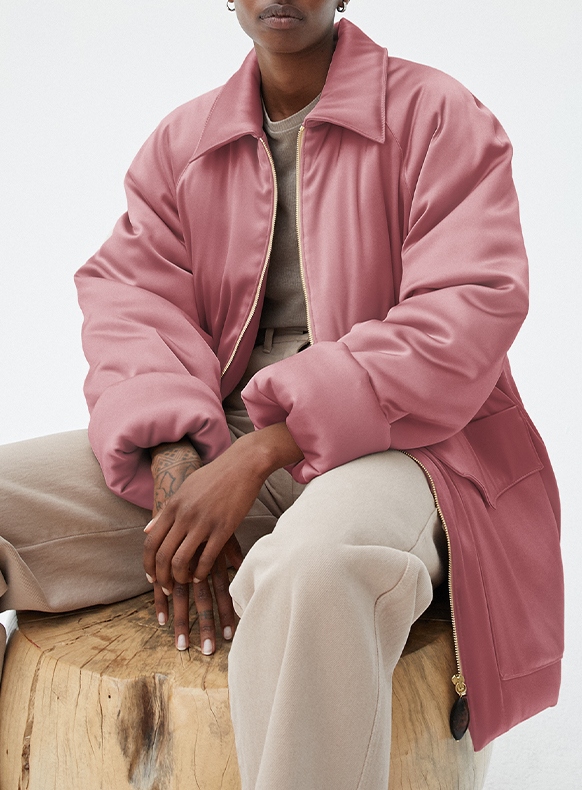
Sandra’s TRR Archive Sale Favorites
“I love our vegan leather, especially the Lenox puffer coat. In the sleep satin, one of my favorites is the Amas skirt, which is this sarong style skirt. I also really like some of our faux fur bags. This is very authentic to us, the vegan leather, and also the sleep satin, which are all sustainable materials. The sleep satin is from an FSC-Certified triacetate. We wanted to represent us in a way that people know us and also it was important that we feature our most sustainable materials, which we celebrate as well.”


